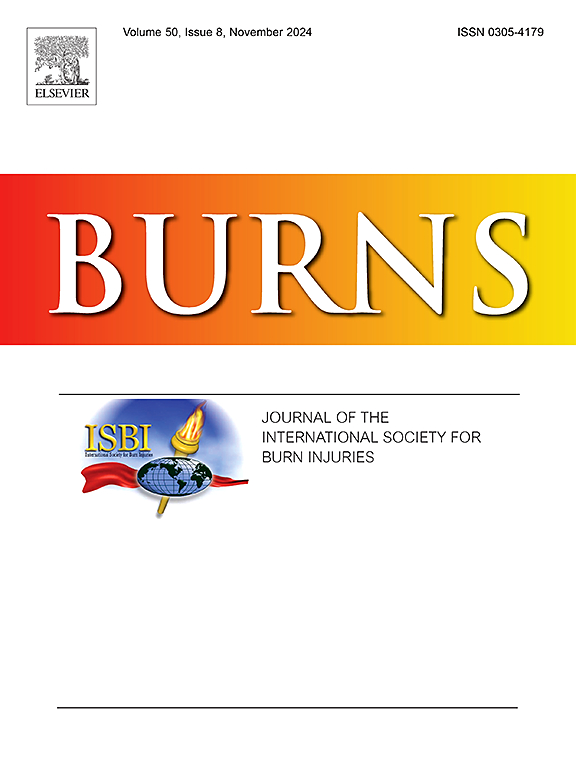Component analysis of polyherbal repair recipe and its pharmacological mechanisms in burn wound healing
IF 3.2
3区 医学
Q2 CRITICAL CARE MEDICINE
引用次数: 0
Abstract
Background
The Jiusheng Wound Repair Recipe (JSWR), a folk prescription of traditional Chinese medicine, has been used clinically for treating burns and scalds with notable efficacy. However, its chemical components and pharmacological mechanisms remain unclear.
Methods
Ultra-performance liquid chromatography coupled to quadrupole time-of-flight mass spectrometry (UPLC-QTOF-MS) was utilized to analyze JSWR's chemical composition. A wound healing model in Kunming mice assessed the effects of JSWR on healing rates, collagen synthesis, angiogenesis, and inflammation through histological and immunohistochemical techniques. Potential pharmacological mechanisms were explored by metabolomic analysis.
Results
All 530 components were identified or characterized in JSWR. It significantly accelerated wound healing and reduced TNF-α and IL-6 levels. The expression of CD31 and collagen I and III were enhanced, while COX-2 expression was reduced. 19 critical metabolites and key metabolic pathways were explored by metabolomics.
Conclusions
JSWR effectively promoted wound healing through enhancing collagen deposition and angiogenesis, and by inhibiting inflammation. Further exploration of mechanisms would be valuable to the application and development of JSWR.
多药修复方成分分析及其在烧伤创面愈合中的药理机制
背景九生伤科方(JSWR)是一种民间传统中药处方,临床用于治疗烧伤和烫伤,疗效显著。方法利用超高效液相色谱-四极杆飞行时间质谱(UPLC-QTOF-MS)分析九生伤药方的化学成分。通过组织学和免疫组化技术,在昆明小鼠伤口愈合模型中评估了 JSWR 对愈合率、胶原合成、血管生成和炎症的影响。通过代谢组学分析探讨了潜在的药理机制。结果 JSWR 中的所有 530 种成分均被鉴定或表征。CD31 和胶原 I、III 的表达增强,而 COX-2 的表达降低。结论JSWR 通过增强胶原沉积和血管生成以及抑制炎症,有效促进了伤口愈合。对其机制的进一步探索将对 JSWR 的应用和发展具有重要价值。
本文章由计算机程序翻译,如有差异,请以英文原文为准。
求助全文
约1分钟内获得全文
求助全文
来源期刊

Burns
医学-皮肤病学
CiteScore
4.50
自引率
18.50%
发文量
304
审稿时长
72 days
期刊介绍:
Burns aims to foster the exchange of information among all engaged in preventing and treating the effects of burns. The journal focuses on clinical, scientific and social aspects of these injuries and covers the prevention of the injury, the epidemiology of such injuries and all aspects of treatment including development of new techniques and technologies and verification of existing ones. Regular features include clinical and scientific papers, state of the art reviews and descriptions of burn-care in practice.
Topics covered by Burns include: the effects of smoke on man and animals, their tissues and cells; the responses to and treatment of patients and animals with chemical injuries to the skin; the biological and clinical effects of cold injuries; surgical techniques which are, or may be relevant to the treatment of burned patients during the acute or reconstructive phase following injury; well controlled laboratory studies of the effectiveness of anti-microbial agents on infection and new materials on scarring and healing; inflammatory responses to injury, effectiveness of related agents and other compounds used to modify the physiological and cellular responses to the injury; experimental studies of burns and the outcome of burn wound healing; regenerative medicine concerning the skin.
 求助内容:
求助内容: 应助结果提醒方式:
应助结果提醒方式:


